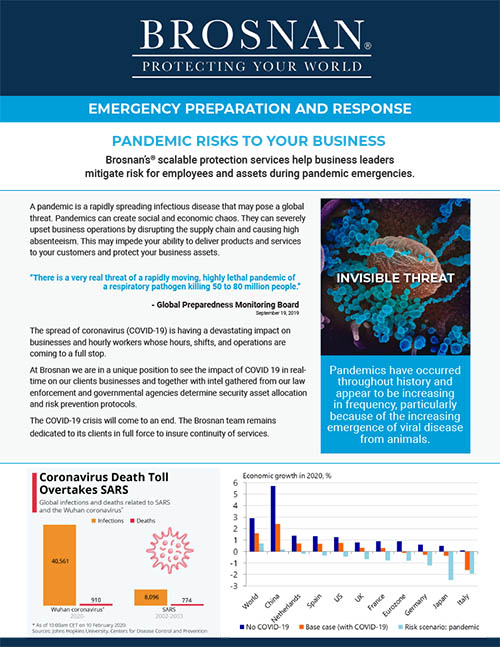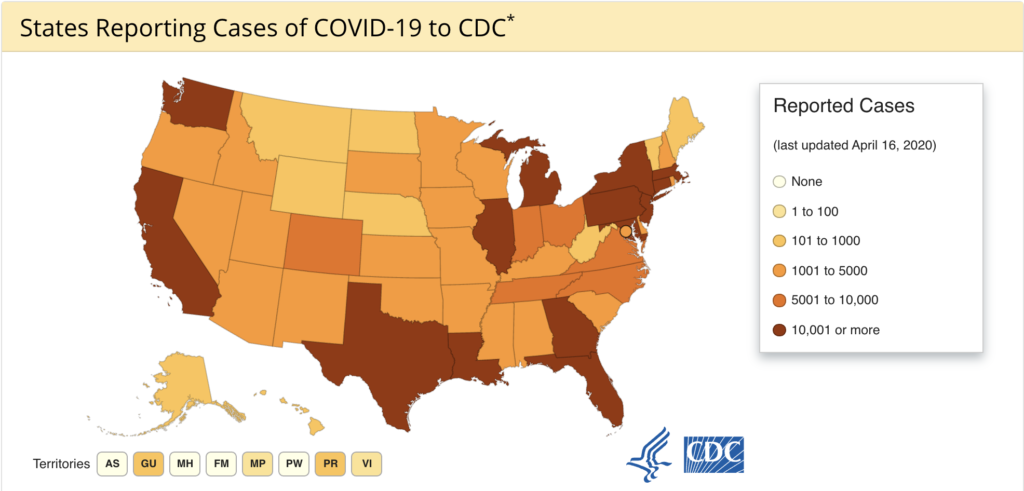SIGN UP TO RECEIVE BROSNAN COVID-19 INTEL REPORTS
COVID-19 FAQ
COVID-19 spreads through respiratory droplets from a cough or sneeze. These droplets can spread to someone in close proximity or can land on surfaces and be picked up by others who touch those surfaces.
https://www.cdc.gov/coronavirus/2019-ncov/prepare/transmission.html
The best way to protect yourself is to wash your hands often, disinfect surfaces and practice social distancing (keeping a minimum of six feet between you and other people).
https://www.cdc.gov/coronavirus/2019-ncov/prepare/prevention.html
It is believed that people with COVID-19 are most contagious when they show symptoms, however, it may be possible that some spread may happen from people without symptoms.
https://www.cdc.gov/coronavirus/2019-ncov/prepare/transmission.html
There is no vaccine or cure for coronavirus at this time.
https://www.cdc.gov/coronavirus/2019-ncov/prepare/prevention.html
Symptoms of the virus include fever, cough and shortness of breath. The severity of symptoms can vary from person to person. If you are sick with any of these symptoms, contact your doctor.
https://www.cdc.gov/coronavirus/2019-ncov/symptoms-testing/symptoms.html
If you develop symptoms of the virus, have traveled to an area where there is an outbreak, or have come into contact with someone who tested positive for the virus, reach out to a medical professional to determine whether you need to be tested.
https://www.cdc.gov/coronavirus/2019-ncov/symptoms-testing/testing.html
After contacting a medical professional, stay home, avoid contact with others, get rest and hydrate. Follow all directions from your doctor and continue to monitor your symptoms. If your symptoms become severe, seek medical help.
https://www.cdc.gov/coronavirus/2019-ncov/if-you-are-sick/caring-for-yourself-at-home.html
14 days is the period during which symptoms occur after exposure.
Security Services
Contact Us


